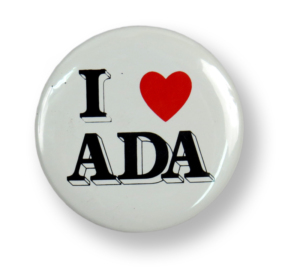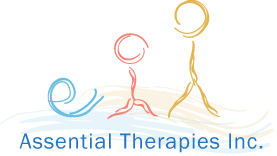 July 2023
July 2023
According to the Centers for Disease Control and Prevention (CDC), up to one in four Americans identify as someone living with a disability. That means we all know someone who could use an extra hand (figuratively speaking, usually, but sometimes literally). As a girl born in the 1980s with a paralyzed left arm, I often was too proud to accept help from anyone other than my parents. I wanted to be strong and independent. I needed to learn how to do things differently, but I didn’t want the attention that a disability demanded. Special schools and handicapped labels did not seem like anything to be proud of, especially as a little kid.
Even though I didn’t know it, there was a battle being fought for me and every other disabled American in Washington D.C. Fierce advocates and elected representatives were hard at work on legislation that would change everything. The Americans with Disabilities Act (ADA) of 1990 prohibited discrimination and opened equal access to housing and workplaces for the disabled that would actually come to serve us all. Similar to any other civil rights legislation that came before it, the ADA changed the American landscape. It opened overall access to public life for millions of Americans. and on a grander scale, it outlined how we can accept each other’s differences.
For the many unseen disabilities, congress passed additional amendments in 2008 to broaden the original act to protect intellectual and developmental disabilities (IDD), because we can’t always see each other’s challenges. Sometimes it can be hard to see even your own challenges, making the ADA even more crucial for all Americans. Just as the feminist movement opened doors for me that I probably didn’t even realize were closed to women, this federal law literally built the ramps to them. As a kid I didn’t want to be seen as handicapped, but as a adult I almost wear disability with pride. Knowing the fight it took to enforce the 504 and sign the ADA, I find myself being overly protective of automatic door entrances because I can imagine the desperate feeling of needing them in the first place.
I guess you could say that my disability made me more sensitive to how society expects us to be. We often hear children ask things like, “Why is that man in a wheelchair?” (seemingly extra loud, of course) when they observe something different. I am not sensitive to that question, but instead, to it’s answer. I am sensitive to how we treat each other in these moments. It is important to not shush (or shame) your children for their curiosity. We want to be honest and direct, maybe saying, “The wheelchair helps him get around,” or, being braver, saying, “he could have been born that way, or maybe he was in an accident. Do we feel comfortable asking him? Let’s over together and say ‘hi.’”
Teach differences. Demonstrate dialogue. We can raise children with compassion.
As a new mom with a physical disability, I was honestly terrified about the logistics of caring for my baby, but I wasn’t worried about raising a good human. Growing up with a physical disability made me empathetic toward others, and I knew that raising a child aware of my disability would in turn make her sympathetic to others. She instinctively holds my hand in a gentler way; she notices others with limb differences like me; she cheers on her friends that need a boost. As she gets older, I hope she will recognize how proud I am of my accomplishments and share in our collective disability pride.
In honor of the chief legislation signed on July 26, 1990, July is celebrated as Disability Pride Month. July offers a spotlight on what disability pride means and what people with disabilities are proud of. If you feel comfortable, share your story on social media and include the hashtags #DisabilityPride and #DisabilityPrideMonth so that others may feel encouraged to share, too. The more we normalize our differences, the more our kids will see that being different is actually totally normal!
